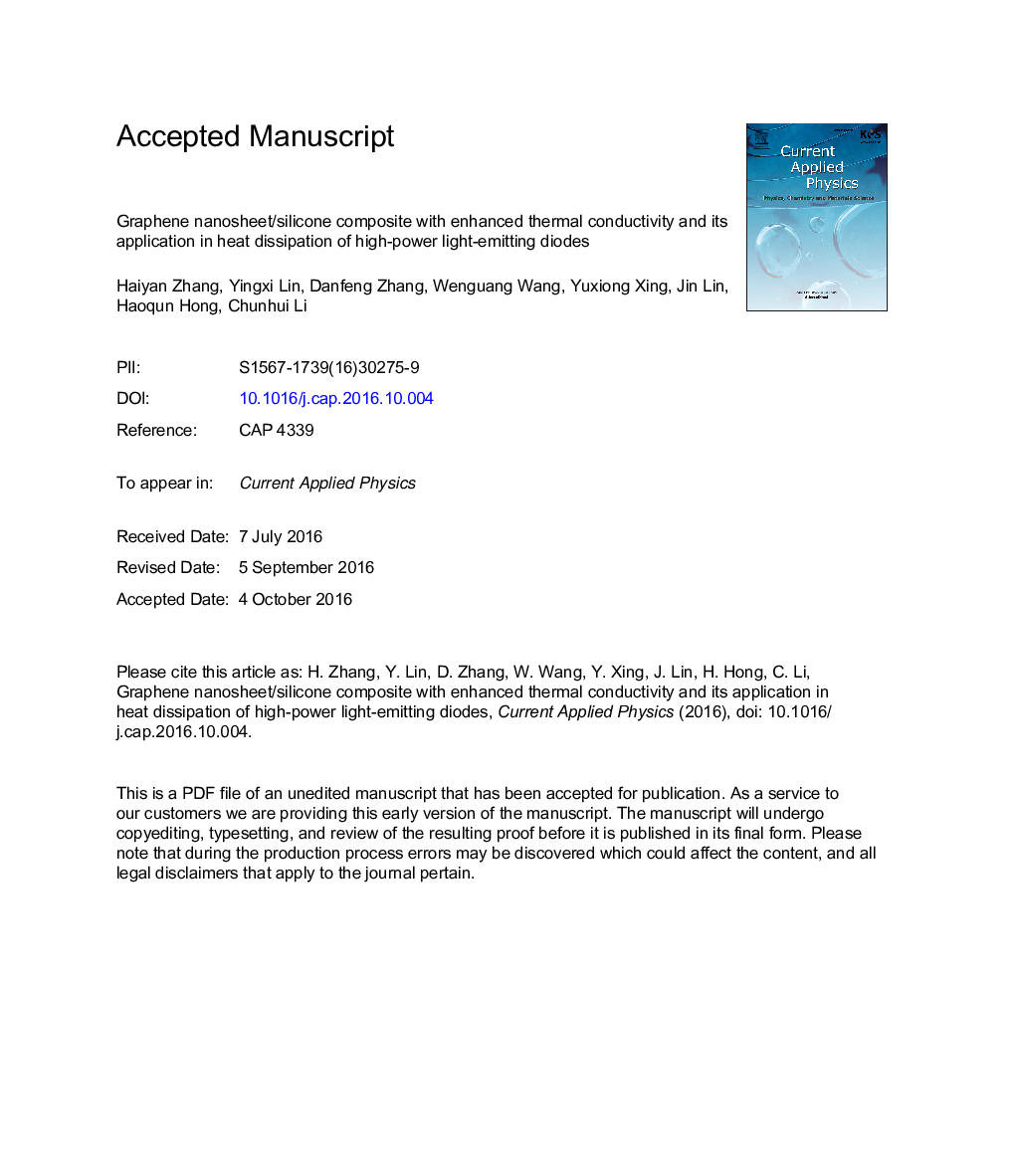| Article ID | Journal | Published Year | Pages | File Type |
|---|---|---|---|---|
| 5489007 | Current Applied Physics | 2016 | 29 Pages |
Abstract
Heat dissipation from light-emitting diodes (LEDs) has become a serious problem because of the LEDs' high luminosity and power. This problem could be solved by improving the dissipation efficiency of each LED system component. A microwave-reduced graphene nanosheet/silicone (GN/silicone) composite with a high thermal conductivity and stability was prepared by mechanical blending. The thermal conductivity of the composite reaches 2.7 W/(m K) with only 1.5 wt% loading, and is 12 times higher than the pure silicone matrix. When used as a thermal interface material between high-power LED chip module substrates and heat sinks, the thermal conductive GN/silicone composite could decrease the temperature difference between the substrate and shell. It could also improve the system heat transfer efficiency. The temperature gap between the heat slug and the heat sink was less than 2 °C with a 1.5 wt% loading of GNs.
Related Topics
Physical Sciences and Engineering
Physics and Astronomy
Condensed Matter Physics
Authors
Haiyan Zhang, Yingxi Lin, Danfeng Zhang, Wenguang Wang, Yuxiong Xing, Jin Lin, Haoqun Hong, Chunhui Li,
